RICHARD FREEMAN takes us on a visit to the infamous Boleskine House on Loch Ness, where, as it turns out, Nessie isn’t the only Great Beast to have ties to the area.
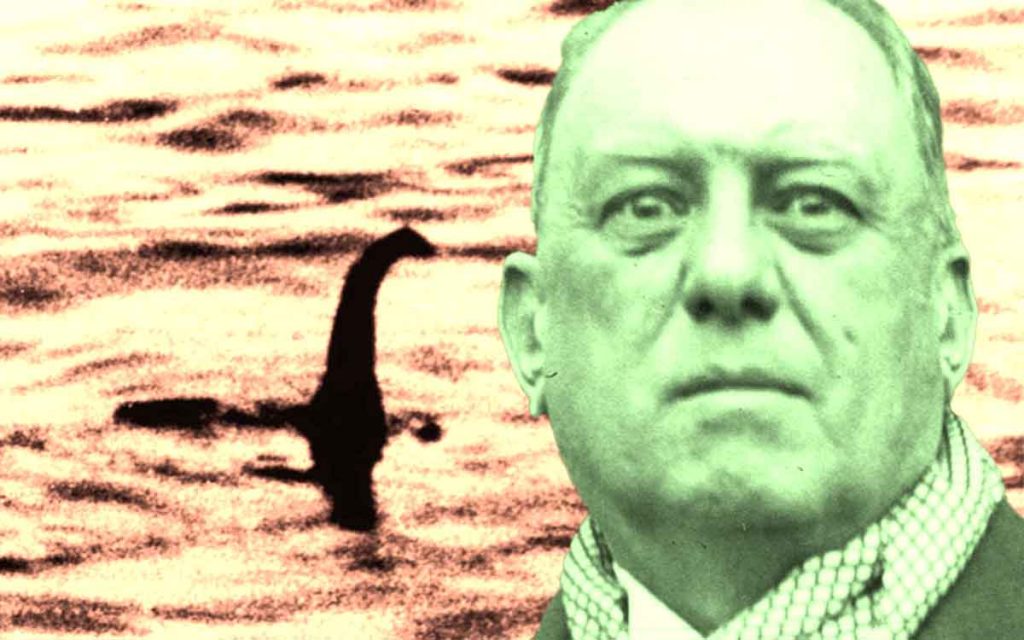
The Wickedest Man in the World Comes to Boleskine
In 1899 a flamboyant character arrived in Inverness. He purchased the brooding Boleskine House on the shores of Loch Ness for twice the amount the building was worth, becoming the “Laird of Boleskine”. The man was Aleister Crowley, the self-styled “Great Beast”, and he had good reasons for paying over the odds for the remote foreboding house.
Crowley was born in Lemington, Warwickshire, in 1875. Rebelling against his ultra-strict Christian upbringing, he became the most flamboyant and colourful character in British occultism. His magickal and sexual experimentation shocked prudish Victorian society (the newspapers dubbed him “the wickedest man in the world”) but Crowley revelled in this and wove an intricate web of myths about himself.
He chose Boleskine on account of its occult architecture. Previously he had scoured Britain for an abode to suit his needs and found none. Once in Boleskine he intended to carry out the ritual of Abra-Melin – an ancient rite that took eighteen months to perform.
Hell’s Dukes are Summoned
The ritual harkened back to the 1400s. It was translated by a Jewish scholar called Abraham the Jew, from a north African manuscript. Abraham was wandering the Middle-East looking for true magicians from whom to learn. He finally came upon a wizened mage called Abra-Melin who passed the rite onto him. It dealt with the summoning of a guardian angel and the summoning and binding of the four great dukes of Hell: Lucifer, Satan, Leviathan and Belial.
(Leviathan, it should be noted, is an ancient sea dragon written of in Hebrew texts. The serpent is likened with the more ancient Lotan in the legends of what is now Syria and the more ancient still Tiamat, the Babylonian dragon of chaos and the even earlier Sumerian water dragon Kur).
The ritual demanded idiosyncratic architecture, and Crowley had previously tried to replicate this in his London flat; although not having the desired effect, strange things did happen there.
In The Great Beast’s own words:
“During this time magical phenomena were of constant occurrence. I had two temples in my flat; one white, the walls being lined with six huge mirrors, each six feet by eight; the other black a mere cupboard in which stood an altar supported by the figure of a Negro standing on his hands. The presiding genius of this place was a human skeleton, which I fed from time to time with blood, small birds and the like. The idea was to give it life, but I never got further than causing the bones to become covered in a viscous slime.“
Exactly whose skeleton it was, and how Crowley came by it is unclear, but it featured in one of his most notorious and amusing spells. Althea Gyles – a local artist and lover of one of Crowley’s poet rivals W. B. Yeats – was sent to visit Crowley. Yeats had her scratch his foe’s hand with a brooch and carry a drop of The Beast’s blood back to her spouse.
Yeats allegedly used this as a spell component to invade Crowley’s dreams. But more of the precious fluid was needed and Gyles was again sent back. This time, The Beast was ready and had already sprinkled Gyles apartment with a “magick potion”. Upon arriving at Crowley’s flat, she became overcome with lust for the skeleton and made love to the blood and slime-infested cadaver.
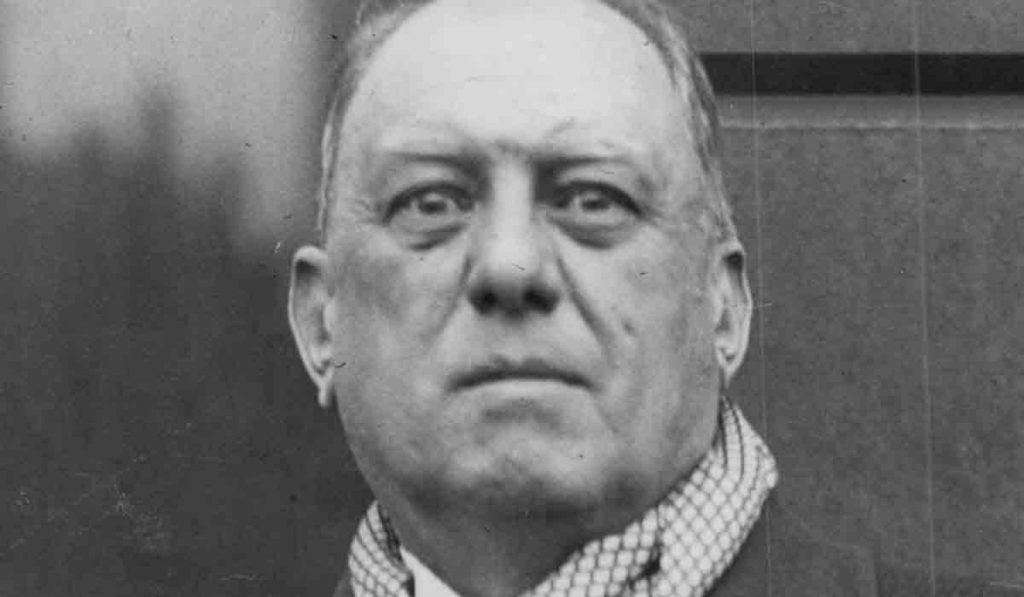
After this “boneing” she was promptly rejected by Yeats.
Yet more happened at Crowley’s flat, apparently on account of the occult décor:
“The demons connected with Abra-Melin do not wait to be evoked; they come unsought. One night Jones and I were out to dinner. I noticed while leaving the white temple that the latch of the Yale lock had not caught. Accordingly, I pulled the door to and tested it. As we went out, we noticed semi-solid shadows on the stairs; the whole atmosphere was vibrating with the forces we had been using. (We were trying to condense them into sensible images.)
“When we came back nothing had been disturbed in the flat; but the temple door was wide open, the furniture disarranged and some of the symbols flung about the room. We restored order and then observed that the semi-materialized beings were marching around the room in almost unending procession.
“When I finally left the flat for Scotland, it was found that the mirrors to take out except by way of the black temple. This had, of course been completely dismantled before the workmen arrived. But the atmosphere remained and two of them were put out of action for several hours. It was almost a weekly experience, by the way, to hear of the casual callers fainting or being sized with dizziness, cramp of apoplexy on the staircase. It was a long time before those rooms were re-let.
“People fled instinctively at the presence of something uncanny. Similarly, later on, when I gave up my rooms on Victoria Street, a pushing charlatan thought to better himself by taking them. With this object he went to see them. A few seconds later he was leaping headlong down the five flights of stairs, screaming in terror. He had sufficient genuine sensitiveness to feel the forces, without possessing the knowledge, courage and will required to turn them to account, or even endure their impact.”
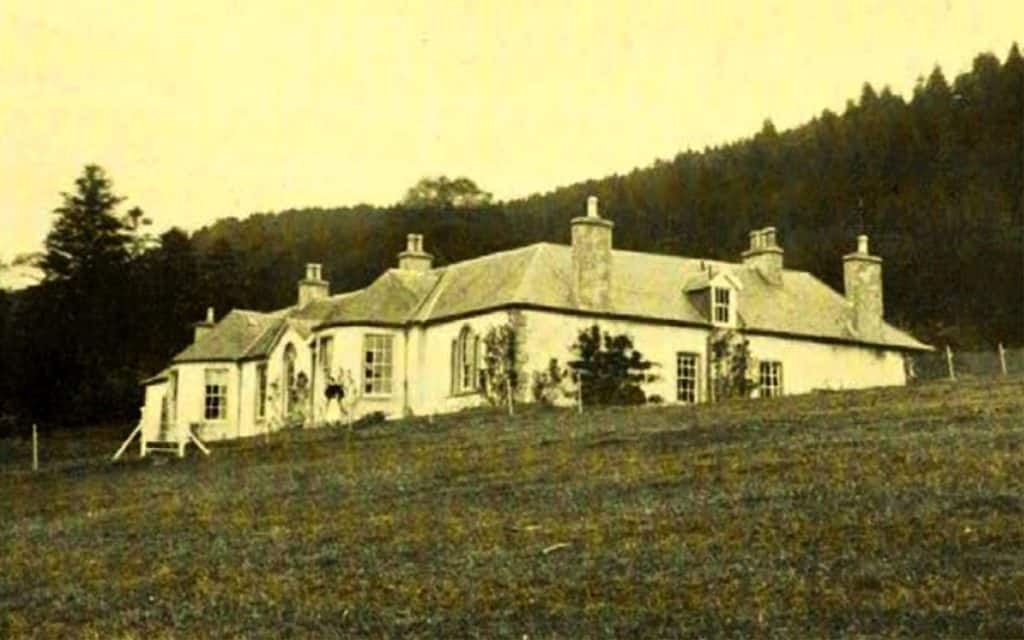
An Incomplete Ritual Sparks Strange Occurrences
Crowley’s attempts to perform the full ritual at Boleskine failed. No one knows quite why, but the rite was never completed. The semi-formed shadows that he evoked in London seemed to have been called again, however…
John Symonds – his biographer – recounts that the house’s lodge and terrace became populated by shadowy shapes. The place seemed to have a strange and violent effect on people. A workman employed to renovate the villa went berserk and attacked Crowley, who had to knock the man out and lock him in a coal-shed. His lodge-keeper – who had been a teetotaller – went on a three-day drinking-binge and tried to murder his own wife and children.
Crowley finally left in 1918 – but some believe he left something behind.
Subsequent owners of Boleskine have also reported disturbances. Musician and former member of the group Led Zeppelin, Jimmy Page brought the house in the 1970s. His friend and custodian of Boleskine, Malcolm Dent, has experienced the house’s dark side on several occasions:
“Most of the oddities occurred during upheavals in the house. I am not talking about wallpapering, but structural alterations. Any time there was any thing major, it was almost as though the house didn’t like it. If we didn’t get on with the job and get it finished, something would let us know about it. We would be wakened up during the night with heavy doors banging all over the place and carpets and rugs being rolled up. It was though it was a reminder to get on quickly and get the job over.”
Another time, Malcolm and some friends saw a statue of The Devil rise up from a mantelpiece, float to the ceiling, then smash to the floor.
However, the most horrifying event happened early one morning when the disturbances reached a crescendo:
“I was awakened in the wee small hours and just knew something was wrong. I was petrified. Something outside the bedroom door was snorting, snuffling and banging. It sounded like a huge beast. I had this clear picture in my mind of what it looked like, but there was no way I was going to open the door. I had a knife on my bedside table and I opened the blade and just sat there.
“The blade was so small it wouldn’t have done any good, but I was so frightened that I just had to have something to hang on to. The noise went on for some time but even when it stopped, I still could not move. I sat in bed for hours and even when daylight came, it took a lot of courage to open that door. Whatever was there, I have no doubt it was pure evil.”
Nessie Comes to Boleskine
Could it be that the daemon-summoning ritual had worked in a way that Crowley had not foreseen?
Modern day wizard, surrealist, and performer Anthony ‘Doc’ Shiels thinks this may well be the case. Whilst engaged in the magickal “Monstermind” experiment described later, Doc made the acquaintance of a man named Patrick Kelly. Kelly claimed to have photographed a lake monster in Lough Leane in 1981.
This however was not the most fantastic of his claims – he said that he was a direct descendent of Edward Kelly, the notorious scryer of Dr John Dee. Dee was the court magician to Queen Elizabeth I, and claimed to “speak with the dead” via a young medium whom he had trained.
The modern day Kelly also claimed his father, Laurence, had met Aleister Crowley in Paris in 1933 shortly after he had left the Abbey of Thelema. Crowley told Laurence that he was very interested in the Loch Ness Monster – whose first major flap of the 20th century was occurring.
Patrick Kelly and his father both claim to have seen the Loch Ness Monster on 1st May 1969 – close to Boleskine. Fantastic assertions indeed, but at least for this last one there may be some evidence…
Clues Lead to Mysterious Ritual to Summon the Loch Ness Monster
In June of the same year, three American students were exploring the 17th century cemetery below Boleskine House. They came upon a curious object. It was an old tapestry wrapped around a conch-shell. The tapestry was decorated with serpent-like symbols embroidered in gold thread. It measured four feet by five feet, and seemed to be old and threadbare. There were reddish-stains at each corner, as if objects had been placed there.
All in all it looked like an altar-cloth. The shell was about five inches long, white and inscribed with two parallel grooves and a lotus blossom. When blown it produced a harsh braying sound. The objects were taken to the Victoria and Albert Museum in London to be studied by experts. The tapestry was latter identified as being Turkish in origin. The snake-like symbols were Turkish script for the word serpent. (We should also note that today, Lake Van in the east of Turkey, is said to be inhabited by a dragon).
Lotus flowers – like the one on the conch-shell – along with roast swallows, were said to be the favourite food of dragons in China. They were often used as offerings to dragons in oriental lakes, to appease them and ensure rainfall. Could Patrick Kelly and his father have been performing some kind of ritual at Loch Ness? Perhaps they were disturbed and had to leave behind their artefacts as they hurriedly retreated. If this were the case then it seems that the Kellys were successful in their endeavour.
Doc instigated the largest monster-raising experiment ever in 1977. Doc had been in contact with seven professional psychics from around the world for some time. The group called themselves Psychic Seven International or P-S-I. The seven decided to try and contact or called up aquatic dragons by using their powers.
Doc took part in a number of spectacular rituals involving sky-clad [naked] witches, beside various bodies of water in Ireland and Scotland. His colleagues concentrated on other lakes around the globe. The experiment commenced on the last day of January or more importantly the Pagan feast of Imbolc.
Doc saw the results for himself on the 21st of May, 1977. He had travelled to Scotland with his wife, Chris, because he had performed a ritual invocation. He was in the carpark of the Inchnacardoch Lodge with four friends, when they all saw three humps gliding through the water about 900 feet away in the direction of Fort Augustus.
The humps slipped with hardly a ripple beneath the surface. None of the group had a camera on them at the time. Doc, though elated at the beast’s presence, was understandably frustrated.
Little did he know that he would later that day take what are widely regarded to be the finest pictures of the Loch Ness Monster ever obtained….
Capturing Nessie on Camera
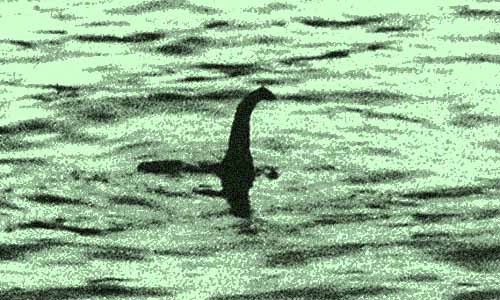
Doc and Chris had hitch-hiked to Drumnadrochit, and from there walked to Urquhart Castle, overlooking the Loch. At 4PM, he was ensconced in a ruined tower, looking over the water from a window – this time with his camera.
“Quite suddenly, a small dark head on the end of a long sinuous neck broke the surface of the water, about a hundred yards away. It was, undoubtedly, the Loch Ness Monster, proudly erectile, ready to be snapped.
“I instantly raised my camera and shot two pictures during the few seconds the creature was visible. Its neck was four or five feet long, greenish brown, with a yellowish underside. Its open mouthed head was tiny in relation to the muscular neck. The animal turned away from me, straightening its neck before sinking vertically.
“I stood there mesmerized by the brief dreamlike vision. My heart beating rapidly, hands shaking as I lowered the camera, whispering expletives, ecstatic.”
Doc’s friend, David Clarke arranged for the high speed Ektachrome film to be developed by Newquay Colour Services, who handled most of the colour transparency work for Cornish Life magazine. The two snaps were startling in their clarity, showing the muscles in the beast’s neck and its open mouth. The gleam of an eye even seems to be visible.
Some however have dismissed the picture as a fake, possibly a close-up photo of a painting on silk.
The 1970s – A Decade of Monster Sightings
The results of Monstermind worldwide were spectacular – 1977 was a year filled with monsters! A gigantic aquatic dragon was sighted off San Francisco Bay, and Champ, the monster of Lake Champlain appeared. A twelve metre (forty foot) monster was seen in Lake Kol-Kol in Kazakhstan (in what was then Soviet Central Asia).
One Miss M. Lindsay took two pictures of Morag, the monster of Loch Morar on 31st of January. On the same day a monster was spotted in Loch Sheil by John Smith.
The Loch Ness Monster was seen on at least three occasions. Mr and Mrs Alex McLeod, Pat Scott-Innes, and a Mr Flemming and his daughter Helen. Three colour photographs of Morgawr – the Cornish sea dragon were taken by Gerald Bennet from Parson’s Beach – and the monster was spotted again by Ray Hopley off Trefusis Point.
A spectacular set of sightings, but they came at a cost – if one gives credit to Doc’s psychic backlash theory. Dr David Hoy – one of the American participants in Monstermind – suffered a heart-attack. Another member – Major Leslie May MBE, of Edinburgh – also fell ill, and many other members of the team from the former USSR, Mexico, and India have seemingly vanished. Doc has heard nothing of them since 1977.
Doc himself was attacked by a mob in Plymouth, accidentally set his beard on fire, had a son involved in a motorbike crash, had his daughter thrown by a usually docile horse, had another daughter stricken by abdominal pains, and lost two cats to some unidentifiable malady. Ted Holliday – another long-term monster hunter reported a similar “curse” that seemed to banjax him some years before.
The idea that the Loch Ness Monster was a malevolent supernatural entity reached its peak in the early 1970s. In 1973, one man believed things had gone on too long, and decided to exorcise Loch Ness. He was the Reverend Dr Donald Ormand. Dr Ormand was perhaps the 20th century’s most renowned exorcist.
During his long career he’d dealt not just with ghosts and demonic possession, but with latter-day vampires, phantom black dogs, and areas of the sea where people were drawn by a strange siren-like urge to drown themselves. These cases, fantastic as they are, pale into children’s games, when compared to the Doctor’s strangest case.
Dr Ormand’s first encounter with a lake monster happened in 1967 whilst on a caravanning holiday on the shores of Long Loch in Ross-shire. One morning, he set out to walk to the village of Ardelve. His route took him past Loch Duich. As he looked out over the loch, the calm water suddenly became violently disturbed, foaming and heaving.
For one absurd moment the Reverend thought a submarine was breaching in the loch. But the object revealed itself to be some immense, aquatic-animal, with two huge humps, that reared out of the water. Then – just as swiftly as it had surfaced – the beast sank, leaving only concentric ripples as a clue to its manifestation.
More Than Flesh and Blood
It was not until the following year that Dr Ormand began to suspect that these monsters were not conventional flesh and blood creatures. In June 1968 he had a far more alarming encounter with a sea-serpent. The Reverend was holidaying with his friend Captain Jan Andersen in Norway. Andersen had offered to show Dr Ormand the “eeriest waterway in Norway” – the ‘Fjord of Trolls’ (note the link with hairy giants).
The entrance to the fjord is hidden, and was used by British craft during The Second World War. The men travelled along the long, narrow, waterway screened on either side by gargantuan cliffs. But it was only on their return journey, that the exorcist began to feel something was badly wrong. A feeling of growing menace began to creep over the area. As they approached the entrance to the fjord the water began to seethe.
“What on Earth is it?” asked the Reverend.
“It can be only one thing”, replied the Captain. “It would be useless to try and avoid it.”
Two massive humps appeared, much like the ones the Doctor had seen in Scotland but much closer. The massive animal bore down on their boat with terrifying speed. And the frightened cleric braced himself for an impact that would turn the vessel to matchwood.
“It will not hurt us, they never do”, shouted The Captain. Sure enough the monster veered to the starboard at the last moment and submerged.
“Shall we follow it?” inquired the Reverend, eager to see more of the fantastic animal.
The Captain’s reply was cryptic: “Sufficient unto the day is the evil thereof. The further we kept away from that thing the better. When I said evil its what I really meant. This is the third time I have seen it. On the other occasions it was further north, closer to the North Cape. They are what our ancestors called the Sea Serpents. Today people regard them as existing only in legend. But when you have seen them you believe in them”.
Dr Ormand questioned his reasoning: “But why are they evil? That one might have easily capsized our boat, but it did us no harm.”
The Captain’s answer was even stranger than before:
“They don’t do physical harm. They want to convince any who see them that they are harmless. The evil they do is to men’s characters. The serpent in the Garden of Eden was no ordinary snake, and what you have just witnessed is no ordinary creature. “
Dr Ormand enquired as to their true nature. The explanation for these extraordinary appearances, in my view, lies not in the field of science, but in the realm of the supernatural. What has been seen, and is still visible to some on occasion, is not a concrete present day monster, but a projection into our day and age of something which had its habitat in Loch Ness and its surroundings, millions of years ago.
Commenting on modern witnesses he says:
“What they saw was not something that was taking place at that precise moment. The gigantic creature they were so privileged to see was no longer in the land of the living. It was something seen out of time. The so- termed Loch Ness Monster is on physical but psychical, a spectre of something which existed in the waters and on the shores of the vast lake in the dim recesses of the past.”
He had his ideas backed up in 1972 whilst attending a meeting of the Organisation of Enquiry into Psychical Disorder in Sweden. An eminent Scandinavian neurologist delivered a report concerning the monster of Lake Storjsson. The report was about the malevolent effect that the monster seemed to have on those who hunted for it, or who had seen it regularly. It resulted in shocking moral degeneration. Similar patterns were found, or so the neurologist claimed, in Irish and Scottish cases.
At almost the same time, Dr Ormand received a letter from F. W. Holliday – the renowned monster hunter who had recently come to similar conclusions to the Doctor. The letter congratulated him on his insight.
F.W. Holliday believed that lake monsters were dragons in the literal sense. Evil paranormal serpents. He detailed his findings in two books The Dragon and the Disc and The Goblin Universe. Some encounters he had heard of seemed to generate unnatural levels of terror in the witnesses.
Mr Richard Jenkyns and his wife saw the horror from their lochside house on the 30th September 1974. The couple watched the monster through binoculars for half an hour. It seemed to be around eighteen metres (sixty feet) in length. The monster had a lasting effect on them. Later Richard commented:
“I felt the beast was obscene. This feeling of obscenity still persists and the whole thing put me in mind of a gigantic stomach with a long writhing gut attached. “
Mrs Greta Finlay – an Inverness housewife – had similar feelings toward the thing she encountered at close range on 20th August 1952. She had gone fishing with her young son, and was on the north-east shore of the loch near Aldourie pier, off Tor Point.
“I was sitting outside the caravan when I heard a continual splashing in the water. After several moments passed and realizing this was not the usual wash from a boat I walked round. To my surprise I saw what I believe to be the Loch Ness Monster. My son and I stood looking at this creature in amazement. Although I was terrified, we stood and watched it until it submerged, which it did very quickly causing waves to break on the shore.
“We had an excellent view as it was so close to the shore. Its skin was dark in colour and looked very tough. The neck was long and held erect. The head was about the same width as the neck. There were two projections from it, each with a blob at the end. This was not a pleasant experience. I certainly never want to see the monster again. “
Mrs Finlay was interviewed by the late Tim Dinsdale – perhaps the greatest Nessie hunter of them all. She confessed to him that she had been paralysed with fear, and that her son had been so utterly horrified, that he had given up fishing all together. This “terror effect” is not confined to the Loch Ness Monster. The most extreme case involved a relatively diminutive lake in Ireland.
In 1954 Miss Georgina Carberry – a librarian from Clifden – and three friends were on a trout fishing trip to Lough Fadda. This small Connermara lough, lies in Derrygimlagh – a bog of some thirty-five square miles, dotted with small lakes connected via streams. The friends enjoyed a good day’s fishing, but in the late afternoon an event occurred that changed their lives forever. She was later interviewed by F.W. Holiday who reproduced the exchange in his books.
Holiday: Could you tell us what you saw on Lough Fadda when you had the sighting of this object?
Carberry: Well, it was a very long object. We sighted it rising…coming out from an island. At first one of our company thought it was a man swimming in the lake…then she said: “Oh, now look at it!” And she was quite right only it wasn’t a man swimming, but a very big object which we watched…oh, for a long time…coming leisurely towards us…swimming along slowly.
So we kept watching it and eventually, through time, it got very near to us. Anyway, next thing, we began to get a bit worried. I was sitting nearest to it and it came in I suppose, oh, to within twenty yards of us. I was the first to move and jumped back and the other three who were sitting behind me did likewise.
And as soon as we moved it just came right around…swung right round a rock which was near the shore and dived and we could see these awful big rings in the water as it was sinking. Before two minutes it had gone practically up to the island again when it surfaced. We could distinctly see two big humps showing behind its head out of the water.
And the tail we noticed, when it swung around the rock, ‘t’was kind of a fork – a V-shaped tail. And the mouth which was open when it came in quite close to us at the shore and the eyes and that I can’t really remember. But I distinctly remember that the whole body had movement in it.
Holiday: What do you mean by “movement”?
Carberry: It seemed like…wormy. You know – creepy. The body seemed to have movement all over it all the time.
Holiday: What did the head look like? Was it like anything you’ve seen before?
Carberry: No, it wasn’t. The only thing the mouth resembled, open, was like shark-shaped.
Holiday: Did you see teeth? What did the mouth look like?
Carberry: Just…oh, a huge great mouth. I can remember white inside but as regards teeth and eyes, I can’t remember what sort of eyes it had because we were so frightened to see such an unusual object.
Holiday: How high was it standing out of the water…the head and humps you mentioned?
Carberry: Oh, they came right up. As it swam towards us we could see the two humps behind the head very clearly.
Holliday: And how high out of the water did the head stand?
Carberry: Well…higher than the humps. It was a fair distance out of the water.
Holiday: Was there a neck to speak of?
Carberry: There was, yes. It seemed to come up just in one long…(curve?)
Holiday: And you jumped back?
Carberry: We certainly did! I was the first to move being the nearest to it.
Holiday: Could you see how wide it was or whether it was a narrow object of…?
Carberry: Well, now, it was fairly wide in the girth – a good span.
Holiday: And the head was up – clearly visible?
Carberry: Oh very clear… and the mouth.
Holiday: Was it that dark that it was silhouettish?
Carberry: Oh, no, it was a bright evening…a beautiful evening. I can always remember it was so fine – one of the fine summers we had some time ago.
Holiday: Were you affected by this at all?
Carberry: I certainly was! I don’t think I went back to that lake for six or seven years after. And when we went back we would never go alone. Never alone.
To scare someone away from a place for seven years takes a lot, but the fear exerted by this being didn’t end at that. Whilst driving home, Carberry found herself watching for the monster out of fear that it had slithered out of the bog and was pursuing them. She suffered from nightmares about the thing for weeks afterwards. One of the other witnesses had a mental breakdown, and was hospitalised.
The Exorcism Begins
With these encouragements, the Doctor made up his mind to exorcise Loch Ness. The Reverend believed that the monster’s manifestations were not in themselves evil, but rather that evil had attached itself to the phenomenon and to the area. He believed that he could purge this evil, and leave the monsters intact. This theory was not shared by F. W. Holliday who believed the creatures themselves to be overwhelmingly evil.
“I don’t know for certain, but I think their character was described in the first book of Genesis.. I am not sure even that it exists physically or not- there are things which do not exist and yet may be visible to man.”
The more Dr Ormand thought on Andersen’s words the more convinced he became that the monsters were paranormal in nature. The Doctor decided to seek the advice of a fellow exorcist, Reverend Dom Robert Petipierre, a monk of the Anglican Order of St Benedict. Dom Robert took a large map of The Loch, and drew a cross upon it. The top of the crucifix was at the Inverness end of the loch, and the base near Fort Augustus.
The intersection terminated on the left at Drumnadrochit and on the right at a point between Inverfahigaig and Dores. The men planned preliminary exorcisms at each of these points. The final rite was to be carried out in the centre of the cross – in the middle of the loch, in a boat. All the points of entry and exit along waterways, were “bound against evil” to stop the contamination spreading during the ritual.
Between them, the exorcists drew up a rite from German, Spanish, Roman, Greek, and English sources. On 2nd June 1973 the ritual took place. Accompanied by Holliday, Dr Ormand exorcised all of the points, and eventually on a small boat he rowed to the centre of the dark peaty loch. There, floating on 800 feet of cold, black water, he gave the final exorcism:
“I adjure thee, thou ancient serpent, by the judge of the quick and the dead, by Him who made thee and the world, that thou cloak thyself no more in manifestation of prehistoric demons, which henceforth shall bring no sorrow to the children of men.”
After the ceremony, Dr Ormand felt drained and fell into a deep sleep. He believed his exorcism to have been a success and subsequently went on to exorcise Lake Storjsson in Sweden.
Loch Ness – Are the Monsters Really Gone?
Quite a story, all in all. What are we to make of it? Are these the ramblings of a fundamentalist Christian madman with his worldview set in The Dark Ages, or was the Doctor really grappling with some supernatural force in the form of a monster? Exorcism is not confined to Christianity – many other faiths have practicing exorcists. Muslim priests cast out “djinn”, pagan wizards and witches drive out malignant spirits with spells.
Despite his optimism Dr Ormand seems to have failed, for monsters are still seen in Loch Ness.
Having been badly damaged by fire in 2015, last year (2019) Boleskine House caught fire again which resulted in three-quarters of it being raised to the ground.

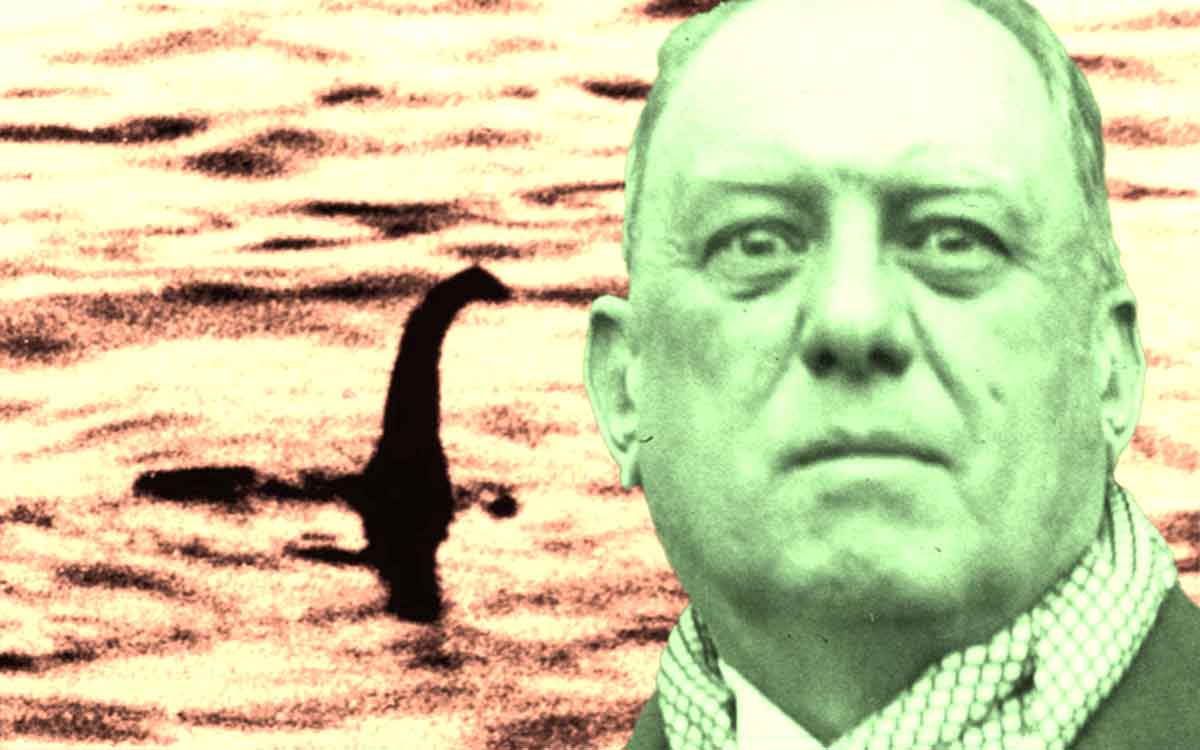

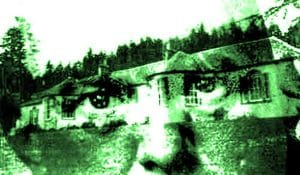
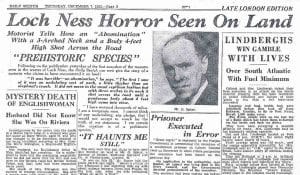
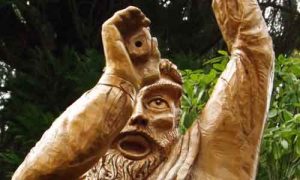
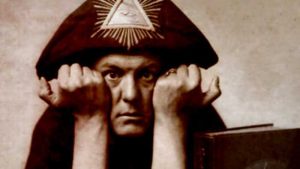

I think out of the two ‘Beasts,’ only Nessie got to Heaven.
Hopefully she left behind a family pod for future generations.
Crowley’s sideshow barker appropriation of world esotericism is extremely overrated.
The fact he profaned it to dedicate a new left-hand-path to himself is hilariously sad.